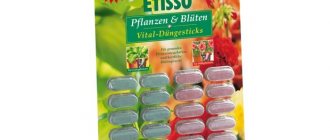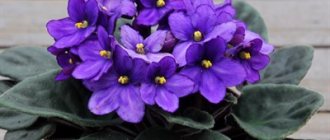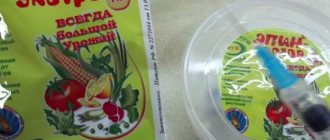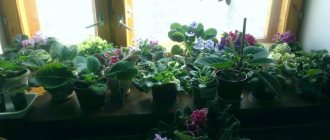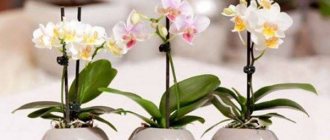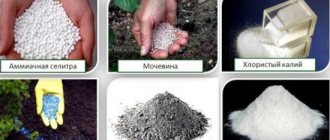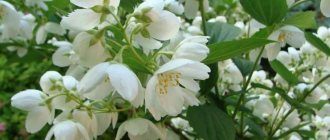If desired, every gardener can achieve a rich harvest. Throughout the growing season - from the emergence of seedlings to the ripening of fruits - he must closely monitor the plantings and help the plants. Regular fertilizing must be applied exactly on schedule and in accordance with the “tastes” of a particular crop.
But remember that it is not enough to simply buy fertilizer, pour it under the first bush you come across and wait for a wonderful result. How not to get confused in all the variety of fertilizers and the timing of their use? Let's figure it out together.
What types of fertilizers are there?
Fertilizers are needed to stimulate plants. They help form the root system, leaves, flowers, and fruits. Fertilizers improve seed germination and survival, help weak and young plants take root and become strong. Agronomists divide fertilizers into several large groups. Organic fertilizers are a nutrient medium formed as a result of the vital activity of living beings. This is manure, bird droppings, humus, compost, peat. Organics are the mildest fertilizers in their effects. They are very difficult to harm the plant. At the same time, it is difficult to solve any specific problem with their help. Organics are universal, but do not have a narrowly targeted effect. Mineral fertilizers are products of the chemical industry. There are mineral macro- and microfertilizers. Macrofertilizers are the well-known trinity: nitrogen, phosphorus and potassium. Nitrogen helps the plant form leaves or shoots that are long, beautiful and green. Phosphorus is actively involved in the formation of flowers and fruits. Potassium is responsible for the plant’s immunity, its survival, and strength. Microfertilizers include other chemicals and elements that plants need, but in minimal dosages. They are usually included in complex fertilizers.
Let's especially talk about vitamins. Just like people, plants need vitamins. Experienced gardeners know how to feed a plant with vitamins so that the substance brings maximum benefit.
Beauty Recipes
Take 2 tbsp. l. oatmeal porridge and mix with 2-3 crushed tablets of ascorbic acid. Apply the mixture to your face for 15 minutes and then rinse with mineral water. This mask smooths out wrinkles, and also increases skin elasticity and improves its color. The most important thing is that it tightens pores, eliminates pimples and spider veins.
If you want to lighten your hair by 1-2 tones without damaging it with aggressive preparations, then mix 3 tbsp. l. honey and 10 crushed ascorbic acid. Distribute the mixture over your hair and put on a plastic cap for 20-30 minutes. Then wash your hair with shampoo and rinse it with a solution of 1 tbsp. l. lemon juice per 1 liter of water.
To keep the skin on your hands and feet soft, bright, and clean, take warm baths for your hands and feet once a week (4-6 tablets of ascorbic acid per 1 liter of water).
B vitamins for plants
Both seedlings and adult plants can be treated with vitamins. You can buy them in specialized stores or in a regular pharmacy (ampoules for injections). Vitamin B1 or Thiamine This vitamin helps the plant use its energy more efficiently. It improves growth and accelerates the circulation of internal juices. It is a good antioxidant for your garden. Thiamine quickly dissolves in water, so it is diluted and used for watering and spraying. Dilute it in a proportion of 1 ml per liter of water. Important: you need to treat plants with water with vitamin B1 in the evening, because the beneficial substance is destroyed in the light. It is also advisable to prepare the solution in a dark place. Vitamin B3 or Nicotinic acid This substance is needed if the plant for some reason “froze” - does not produce new leaves, does not bloom, does not branch. Nicotinic acid acts like a sex hormone, helping to “awaken” the reproductive functions of the plant. Unlike vitamin B1, nicotinic acid is not destroyed by light and works well in combination with other substances. It can be mixed with other fertilizers or even with organic matter. But if it is impossible to “overfeed” with vitamin B1, then you need to be careful with B3. 1 ml of vitamin B3 per liter of water is the maximum possible concentration! You should not exceed it. Watering should be done more often than once every one and a half to two weeks. Vitamin B6 or Pyridoxine hydrochloride Useful for sick or weakened plants. It will be useful to feed the plant with vitamin B6 after insect treatment. It is diluted similarly to other vitamins - 1 ml per liter of water. Ideal if combined with nicotinic acid. Treatment frequency is once every 10 days. Vitamin B12, or Cyanocobalamin This vitamin is directly involved in the process of photosynthesis and helps the plant produce chlorophyll. B 12 stimulates the saturation of plant cells with oxygen. It is best to use B12 in the fall or if the weather lets you down (heavy rains, cloudy weather, no sun for a long time). This is good support for house flowers in winter or those plants that overwinter at home (dwarf conifers, cypresses, etc.). Used once every 10 days, 1 ampoule of the vitamin is diluted in a liter of clean water.
Vitamins for plants
Vitamins are important elements necessary for all living things on earth and plants are no exception. What their lack or excess can lead to, and how to balance plant nutrition, we will tell you in this article.
For people and plants, there are several ways to obtain vitamins: either synthesize them independently, or receive them from the outside along with nutrition. If everything is more or less clear with a person, he is a rational being and can take a “pill” on his own or eat something healthy, a plant does not have such an opportunity. The only way out for a plant in its natural environment is to synthesize vitamins on its own. However, for the production of vitamins, the plant requires two important conditions:
- sufficient amount of light;
- presence of certain bacteria.
If any of the conditions are not met, the plant will not be able to fully synthesize the necessary elements and the plant may have problems.
Lack of vitamins and microelements: what can this lead to?
- A deficiency of such an important element for a plant as potassium
can lead to an imbalance in the water balance inside the plant, a decrease in overall immunity and a decrease in resistance to stress. Potassium deficiency can be diagnosed by the leaves of the plant; their edges become deformed, followed by drying out. Brown spots appear on the leaf blade itself, and the veins become “pressed in.” This process is very noticeable on old leaves. - A lack of magnesium
leads to chlorosis. Because plant chlorophyll contains up to 20% magnesium. This element is vital for the plant for the proper process of photosynthesis. With a lack of magnesium, the leaves become yellow or reddish, the leaf blade is deformed and curls at the edges. - Nitrogen
is necessary for the plant for redox processes. A lack of nitrogen leads to the formation of thin plant stems, small inflorescences and leaves; in general, the plant develops more slowly. Nitrogen deficiency can be diagnosed by yellowed veins of the leaf blade; over time, the entire leaf turns yellow. - A lack of calcium
leads to impaired absorption of almost all important vitamins and microelements. As a result, the plant may show signs of nitrogen or magnesium starvation. Also, with a lack of calcium, the root system of the plant suffers greatly.
Summing up the intermediate results, we can say that the lack of any important element negatively affects the development of the plant and the formation of fruits. However, their excess also negatively affects the health of the plant.
Excess of vitamins and microelements
- Excess nitrogen
leads to excessive growth of the plant’s green mass, which negatively affects the flowering process. If you overdo it with watering, nitrogen will significantly acidify the soil and provoke the formation of root rot. - If there is an excess of magnesium,
the plant stops absorbing calcium. - Excess calcium
leads to difficulties with the plant’s absorption of elements such as iron and manganese.
The golden mean is important in everything, and balanced nutrition is important for the plant. In order for it to receive the maximum of necessary vitamins and microelements, HESI has created a special complex that takes into account all the “wants” of your green friend. Economical consumption will allow you to stretch a 50 ml bottle over the entire growing cycle. A distinctive feature of these vitamins is the absence of an expiration date, here, as with cognac, “the older, the better.”
Super Vit from Hesi is a mix of 15 types of vitamins A, C, E, K
and B vitamins. Ten amino acids: glycine, glutamic acid, L-Alanine, L-Tyrosine, L-histidine, L-leucine, L-phenylalanine, L-proline, L-serine, L-tryptophan. Which are vital for the plant for metabolism, the formation of chlorophyll, phytohormones and enzymes.
By adding Super Vit to plant nutrition, you will relieve the plant from the need to produce vitamins on its own and devote all its energy to growth and formation of inflorescences. At the same time, strengthening the plant’s overall immunity and resistance to stress. Super Vit can be applied throughout the entire growing cycle along with other fertilizers. The main thing is to follow the dosage recommended by the manufacturer - 1 drop of Super Vit per 4.5 liters of water.
You can add Super Vit vitamins every time you water with fertilizers. If you grow using the hydroponic method - when adding water or changing the nutrient solution.
We wish you a great harvest!
What else to buy at the pharmacy for your garden
Iodine, potassium permanganate, magnesium and glucose have definitely beneficial properties for plants.
Iodine accelerates growth and improves resistance to negative factors. True, you need to use it in minimal quantities: 1 drop per 2 liters of water. The iodine solution is added to the root a little at a time, literally ¼ cup at a time. If the plant has withered or lost its elasticity, you can give it a glucose solution. Similar to the human body, glucose will quickly invigorate the plant and give it strength. The tablet or ampoule is dissolved in a liter of water and the plants are watered or sprayed with this composition over the leaves.
A faint pink solution of potassium permanganate helps get rid of diseases and pests - the composition is sprayed on plants and watered at the roots.
Magnesia helps to form a powerful root system and resist chlorosis. For irrigation, dissolve 2.5-3 mg of magnesium sulfate (crystalline powder or ampoules) in a liter of water.
Medicines from the pharmacy for plant nutrition
Aspirin
Probably one of the most common tablets in home medicine cabinets is aspirin. But with its help you can not only lower the temperature, but also feed your indoor plants.
Acetylsalicylic acid in its composition improves the immune system of plants, increases their resistance to fungal diseases, as well as insect pests. Aspirin revives sick and weak plants , and also restores them after winter. Aspirin also improves soil quality.
To prepare a solution for irrigation, you need to crush a quarter of an aspirin tablet and dissolve it in 2 liters of water.
Castor oil
This oil is obtained from the seeds of the castor bean, a poisonous plant. It has found wide application in cosmetology and in everyday life. But this oil is also used in indoor floriculture.
Castor oil is mainly used during the flowering period. Fertilizing with this product “awakens” plants, activates their growth, and increases the number of leaves and buds.
With proper use of castor oil, even a weakened and previously poorly flowering plant can be made to bloom luxuriantly . Plants begin to bloom beautifully and suffer less.
But it is important to remember that castor oil is used only during the flowering period. Fertilizing them during the dormant period is contraindicated.
Feed the flowers with a solution of castor oil in water - add a teaspoon of oil per liter. Plants are watered with this solution.
Ammonia
This is another “pharmacy” fertilizer. Ammonia is a good fertilizer; plants easily absorb it. Because of this property, it can quickly help plants with nitrogen deficiency. Its other effects on plants: restorative, revitalizing. Typically, watering with ammonia is carried out when the plant begins to wilt. Ammonia disinfects the soil and also destroys fungi and various insect pests.
How to use ammonia for fertilizing? To water plants, you need to add a teaspoon of ammonia to a liter of water. After such watering, within a few days the plants will turn green and begin to look better.
But this feeding cannot be used often: a couple of times a month will be enough. More frequent watering will lead to an excess of nitrogen in the soil.
Hydrogen peroxide
And with the help of hydrogen peroxide you can not only stop bleeding, but also revive plants.
Peroxide has disinfecting properties; it blocks the development of pathogenic bacteria in the soil and prevents the development of harmful insects. This remedy also heals fading and diseased plants literally before our eyes . And watering with a solution of hydrogen peroxide is an excellent preventative against various diseases.
To prepare a solution for watering, you need to mix 2 tablespoons of peroxide and a liter of water. This solution can be used in two ways - for watering plants and also for spraying. But you cannot water flowers with this solution more than once a week.
succinic acid
Succinic acid from the medicine cabinet can be used as a plant growth stimulator. It increases plant immunity, protects against pests, and cures rotten roots .
You can water the plants or spray them with a solution of succinic acid. To water fading plants, prepare a solution of 0.25 g of acid and 1 liter of water.
For spraying, you need to prepare a 1% solution of succinic acid; for this, 1 gram of crushed tablet is dissolved in a liter of water.
This solution can be stored for 3 days, after which it loses all its beneficial properties.
Magnesium sulfate
This drug is still sold in pharmacies under the name “Magnesia”. This drug is a source of magnesium, which is very important for the plant. Magnesium is part of plant chlorophyll and affects the root system. With its deficiency, chlorosis is observed, and the general condition of the plant is depressed.
To prepare the solution, you need to dissolve 2.5 mg of magnesium sulfate in a liter of water and water the plants with the resulting solution.
Iodine
Iodine is a good growth stimulant. In minimal doses, it has a positive effect on the condition of plants and their appearance, accelerates growth, improves flowering and helps to survive adverse conditions.
To water the plants, you need to dilute a drop of iodine in 2 liters of water. You need to water carefully, along the edge of the pot, so as not to accidentally burn the roots with iodine. It is also not worth watering a lot, so as not to dry out the soil; one plant should not use more than 50 ml of iodine solution.
Glucose
You can also feed your plants with glucose . Glucose is a building material for plants, contributing to the formation of complex organic substances, and it is also a source of energy. Glucose is used in cases where it is necessary to restore overdried plants or when there is a loss of turgor.
Glucose can be found in tablets and ampoules. To prepare the solution, you need to dissolve a glucose tablet well in a liter of water. And if glucose is in ampoules, then also dissolve it in water. If the drug concentration is 40%, you need to take 1 ml of glucose per liter of water, and if the glucose is 5 percent, then 8 ml. Use glucose solution for watering and irrigating plants.
Potassium permangantsovka
A solution of potassium permanganate (or, as it is called in everyday life, potassium permanganate) can also be used to fertilize home flowers. Plants are watered with a weak solution of potassium permanganate to get rid of insect pests and pathogenic bacteria. Also, such watering prevents diseases and the development of bacteria.
Potassium permanganate is a source of potassium and manganese - microelements that are very necessary for the plant. It is best to dilute potassium permanganate first in a separate container, so there is no risk of making a mistake with the concentration. Wet the tip of a toothpick and use it to pick up some crystals. Place these crystals in warm water and stir thoroughly until completely dissolved. And after that, you can dilute this solution with water to the desired concentration; for watering flowers you need a weak solution of light pink color.
Important! Before watering, be sure to make sure that all potassium permanganate crystals have dissolved, because if they get on parts of the plants, they can cause a chemical burn.
A solution of potassium permanganate acidifies the soil, but not all plants like it, so it’s worth keeping this in mind. And potassium permanganate is quite difficult to get in our time; it is almost impossible to find it for open sale in pharmacies. Therefore, before treating plants with this drug, you need to determine its necessity; perhaps it is worth replacing potassium permanganate with some other drug.
Sodium thiosulfate
This product will help remove chlorine from tap water . Chlorinated water has a depressing effect on plants, and with constant use of such water they may even die. You can infuse tap water for 24 hours in a wide-necked container, or you can use sodium thiosulfate.
The solution is prepared as follows: Dilute 1 ampoule of 10 g of 10% of the drug with 150 g of water. And we add this solution to water for watering plants at the rate of 1 drop per liter. The solution itself can be stored in a plastic bottle in a dark place for up to a year. This method is often given in books on caring for exotic plants.
When using vitamins and preparations, you need to remember that they are only helpers for plants, but basic care involves proper watering, fertilizing, and lighting.
B12 (cyanocobalamin)
Participates in hematopoiesis and hemoglobin synthesis, controls the functioning of the liver and nervous system. Can be formed in the body.
Vitamin deficiency most often develops in vegetarians, since it is not found in plant foods, as well as in patients with gastric resection due to impaired absorption of the substance. You can get it from by-products, meat, fish or cheese. The deficiency is manifested by gastrointestinal dysfunction and severe anemia.
B17 (amygdalin)
The benefits of this substance are a myth. B17 is not a vitamin and is toxic to the body. The compound has been touted by charlatans as a “cure for cancer.” However, there is no evidence base for its effectiveness.
Information about vitamins
Vitamins are low-molecular compounds necessary for the normal metabolism of all organisms. In 1880, Russian biologist N.I. Lunin found that for normal growth of animals, proteins, fats, carbohydrates and minerals are not enough, and some additional substances are also necessary.
He determined this by conducting experiments on mice in preparation for defending his thesis. The mice were fed all the elements known at that time isolated from milk - the mice died, and the experimental animals fed on whole milk developed normally.
Later, in 1911, Polish scientist Casimir Funk called these additional substances vitamins. The discovery and deciphering of the chemical structure of vitamins known today (more than 30) occurred in the first half of the twentieth century.
Vitamins are an integral part of all cells of the body, increase its resistance to various diseases, regulate metabolism, ensure health and longevity. The main amount of vitamins is not produced in the human body, but comes from food. Therefore, nutrition is a very important factor for proper development, growth and maintenance of good health.
The need to organize proper human nutrition was known to doctors of Chinese medicine back in the 1st-3rd centuries BC (more details: Diagnostic methods in ancient China).
Symptoms of vitamin B6 deficiency
Skin dermatitis
Low levels of vitamin B6 are a common cause of seborrheic dermatitis, which is accompanied by a reddish rash with a scaly surface and an oily appearance. This is due to disruption of normal collagen synthesis in the skin.
Cracks and inflammation of the lips
Cheilitis is damage to the lips, accompanied by maceration with transverse cracks in the corners of the lips, and redness along the line where the mouth closes. This disease is quite common. This condition of the surface of the lips is very painful; cracks can bleed, which interferes with communication and eating. Such symptoms may also be associated with exposure to ultraviolet radiation, chapping and folic acid and iron deficiency.
Inflammation of the tongue and oral cavity
Glossitis is an inflammation of the mucous membrane of the tongue, loss of sensitivity of taste buds, with this condition the tongue becomes smooth and inflamed. This interferes with normal swallowing and chewing of food. Vitamin B6 deficiency can trigger this condition, but this is not the only reason, since inflammation can occur due to its damage and infection.
Depression
There is a relationship between depression, irritability and vitamin B6 deficiency. Pyridoxine deficiency reduces serotonin levels, which maintains stability in mood.
Convulsions
Due to the fact that vitamin B6 is involved in muscle contractions, its deficiency can cause cramps in the limbs, muscle spasms, convulsions, and even fainting.
Lethargy and increased fatigue
These symptoms are characteristic of low hemoglobin levels. Because vitamin B6 is necessary for the formation of red blood cells, which transport oxygen to all tissues and organs. Anemia that develops due to a lack of vitamin B6 is often accompanied by a feeling of constant fatigue. Melatonin synthesis is also a process dependent on the level of vitamin B6. Melatonin is a pineal gland hormone that controls sleep quality.
Weakening of the immune system
The immune system is the key to reliable protection of the body from viruses and infections. Vitamin B6 deficiency slows down the synthesis of antibodies and leukocytes. Decreased T-cell activity is also common when vitamin B6 levels are low. The activity of the interleukin-2 protein, which is responsible for the activity of leukocytes, decreases with a lack of pyridoxine.
High homocysteine levels
Homocysteine is an amino acid, an intermediate product of the metabolism of methionine and cysteine. It is formed in the body during the digestion process and does not come with food. To carry out these processes, vitamin B6 and B12, as well as folic acid, are needed. Due to the lack of these nutrients, homocysteine does not change into another form and accumulates in the body. Its excess can lead to the formation of blood clots and increases the risk of damage to the vascular wall.
Indications for use of vitamin B6
With a properly balanced diet, the body receives a sufficient amount of pyridoxine and its derivatives. But due to the body’s inability to create reserve reserves, constant replenishment is necessary. Pyridoxine and its forms received by the body from animal products are better absorbed than from plant sources. This is true for people who prefer vegetarianism. In this case, additional intake of vitamin B6 is necessary. The use of active preparations containing vitamin B6 is recommended for people in the complex treatment of diseases of the nervous system, those suffering from dermatological problems, and acute and chronic hepatitis.
Games with children
Dilute a little iodine in water to obtain a brown solution. Throw an ascorbic acid tablet at him. Stir the liquid with a wooden stick and watch it discolor.
Teach children to identify whether foods contain ascorbic acid. To do this, place slices of lemon, kiwi, bread, sausage, etc. on a plate. Drop iodine onto each product, and where ascorbic acid is present, the drop will lighten.
Dissolve 1 tsp in 1 glass of water. copper sulfate and add 1 tablet of ascorbic acid. Watch as the liquid turns light green and copper oxide precipitates to the bottom.
Today in the article you learned about the unconventional use of ascorbic acid.
Unconventional use of ascorbic acid in the household
Add 1 crushed tablet of ascorbic acid to the straight dough, and it will rise better in the oven. The baked goods will turn out tastier, fluffier, softer and with larger pores.
Flowers in a vase will last longer if you dissolve 1 tablet of ascorbic acid and 1 tsp in water. sugar per 1 liter. Change the solution every 3-5 days.
Ascorbic acid will help remove stubborn potassium permanganate stains. Make a paste of crushed tablets and apply to the stain for 5-10 minutes.
To clean your plumbing from lime deposits, throw 10 tablets of ascorbic acid into the toilet in the evening and leave overnight.
Compound
To strengthen the bones of poultry, add 0.5 tablets of ascorbic acid per 1 liter to the water. For adult birds in the spring and autumn, mix 1 tablet into the grain. per 1 kg of feed.
To speed up weight gain, give piglets 0.5-1 tablet of ascorbic acid every day with water, and calves - 1.5-2 tablets of ascorbic acid.
To prevent vitamin deficiency, dogs can be fed ascorbic acid from the age of two months. Conduct 2 courses per year: in February and September, 0.5 tablets per 1 kg of weight. Give after meals every day and continue for a month. Add 1 tablet of ascorbic acid per 1 liter to drinking water and guinea pigs.
